Key Takeaways: Bee Behavior and Sleep Patterns
- Unique Sleep Cycles of Bees
- Bees exhibit fascinating sleep patterns, taking short power naps throughout the day instead of one long stretch at night. Their rest periods coincide with breaks between foraging trips, allowing them to recharge and maintain optimal energy levels for essential pollination work.
- Comparison to Human Sleep
- Unlike humans, bees do not experience distinct REM and non-REM sleep cycles. Instead, they seamlessly transition between activity and rest throughout the day, efficiently conserving energy. Bees rest in various sheltered spots, utilizing their environment to ensure safety and comfort during sleep.
- Insight into Nesting Habits
- Bees adopt diverse nesting strategies, ranging from underground burrows to intricate hive constructions. Each species has specific preferences based on factors like climate and habitat. Understanding bee nesting behaviors provides valuable insights into their adaptation and survival strategies.
The Life of Bees
Welcome, curious readers, to a delightful exploration into the world of our buzzing friends – bees! These tiny creatures play a monumental role in our ecosystem as essential pollinators.
Can you imagine a world without the vibrant colors of flowers or the succulent taste of fruits? Well, without bees, that could be our reality.
Brief Overview of Bees and Their Importance as Pollinators
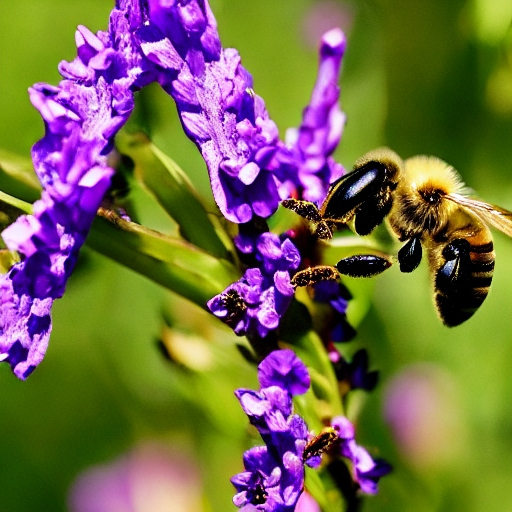
Bees are nature’s helpers with a vital mission. They move from flower to flower, collecting nectar and pollen. While doing this, they transfer pollen between flowers, a process called pollination.
Pollination isn’t just for fun; it’s how plants make more plants. Picture an orchard without apples or a sunflower field with no sunny blooms. That’s what it’d be like without our busy, beekeeping buddies.
Intriguing Question: Do Bees Sleep in Flowers?
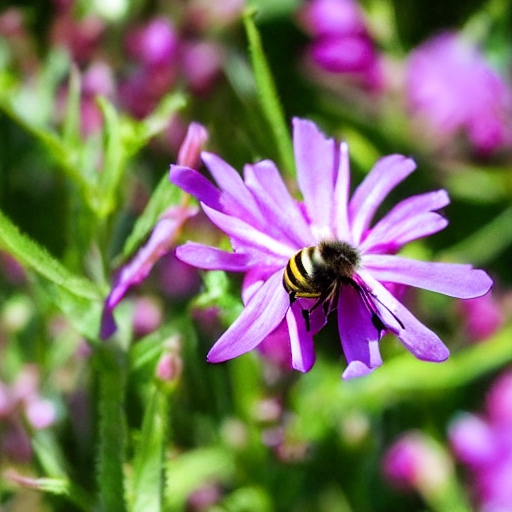
Ever wondered if bees sleep in flowers? It’s a cute idea, imagining them nestled in petals under the moon. But is it real?
Let’s dive into the intriguing world of bees to learn about their behavior, nesting habits, and their special bond with flowers. Get ready for an enlightening journey through buzzing fields!
Bee Behavior and Sleep Patterns
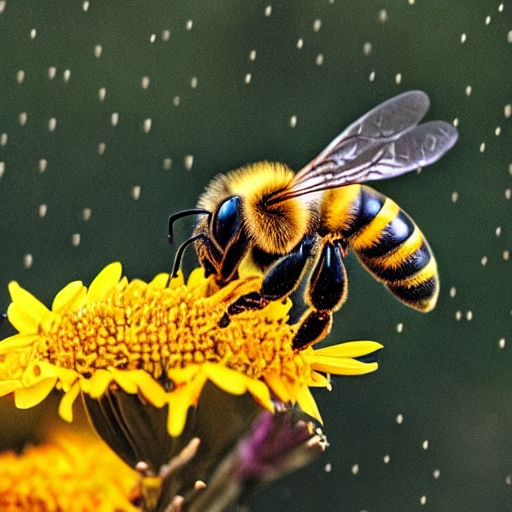
Explanation of Bee Sleep Cycles
Have you ever wondered if bees catch some shut-eye? Well, the answer might surprise you!
Bees do sleep, but their sleep patterns are quite different from humans. Bees have a fascinating way of sleeping. They tend to sleep in short bursts throughout the day, rather than in one long stretch at night.
These tiny creatures take power naps in between their foraging trips to flowers. Imagine a fly buzzing around your garden all day, collecting nectar and pollen, then taking a quick five-minute snooze before heading out again!
When bees are in sleep mode, they often tuck their little legs under their bodies and rest their heads. It’s almost like they’re meditating or practicing yoga poses while catching some Z’s!
Bees need these breaks to rest and regain energy for their vital pollination work. If you spot a bee resting on a flower, it’s a queen bee most likely just taking a quick nap to recharge.
Comparison of Bee Sleep to Human Sleep Patterns

Let’s discuss how bee sleep is different from human sleep. While humans need hours of continuous sleep, bees do well with short power naps. Imagine if we could rest as efficiently as bees do!
Bees don’t have REM and non-REM sleep cycles like humans. They smoothly switch between being active and resting all day. Unlike humans with their bedrooms, bees don’t have individual beds or pillows!
They might huddle in the nest for warmth on cold nights. On warmer days, they rest in snug spots on flowers or leaves. It’s interesting how these insects have unique sleep habits that fit their busy lives.
Next time you see a bumblebee resting in a flower, enjoy nature’s beauty. Even the smallest creatures need their rest!
Nesting Habits of Bees
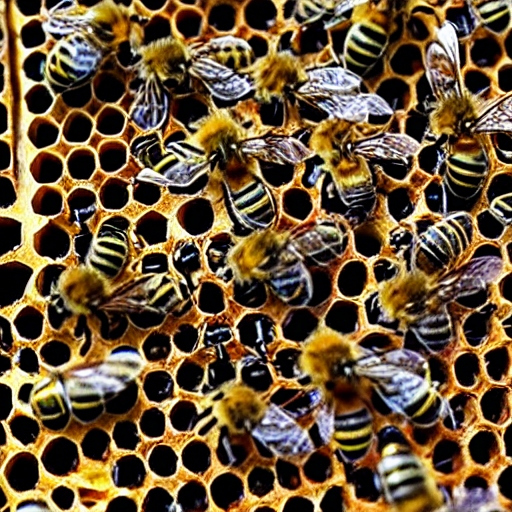
Description of where bees typically rest or sleep
Bees are fascinating creatures that have unique nesting habits depending on the species. While some bees build intricate hives, others prefer to nest in underground burrows. Some even nest within hollow trees.
In general, bees seek out sheltered and protected locations to rest, feed, and sleep. These spots provide them with security from predators and adverse weather conditions.
One common place where bees rest is inside their beehives. The hive serves as the central hub for the colony. They provide a safe space for other bees, to congregate, store food, and raise their young.
In the hive, there are specific areas for different activities, like resting. Some bees make nests in underground burrows they dig.
These caves offer protection and insulation forage from temperature fluctuations above ground. Bees may also seek out pre-existing cavities in trees or abandoned rodent holes as natural nesting sites.
Insight into the types of nests bees create
Different bee species make different types of nests based on their preferences. For instance, solitary bees build individual nests instead of living in big hives.
Mason bees gather mud or chewed plant material to build partitions within their nest chambers. These brood chambers are where they lay eggs. Bumblebees are another group of social bees that construct nests differently from honeybees.
Bumblebee nests are commonly discovered underground. This is usually in old rodent burrows or dense grassy spots. The queen bumblebee creates a wax-covered nest cell. She then lays her eggs and raises her initial group of worker bumble bees there. These workers then become new queens and grow the colony.
Honeybees, on the other hand, construct intricate hives using beeswax produced by worker bees. These hives have hexagonal cells where they store honey, pollen, and nurture larvae.
Every bee has a job in the hive’s hierarchy to keep it running smoothly and surviving in all seasons. Learning about the nesting habits of colonies of various bee species shows how they adapt and find ways to create homes. These homes are for resting, raising young bees, and storing food all year.
The Vital Relationship Between Bees and Flowers
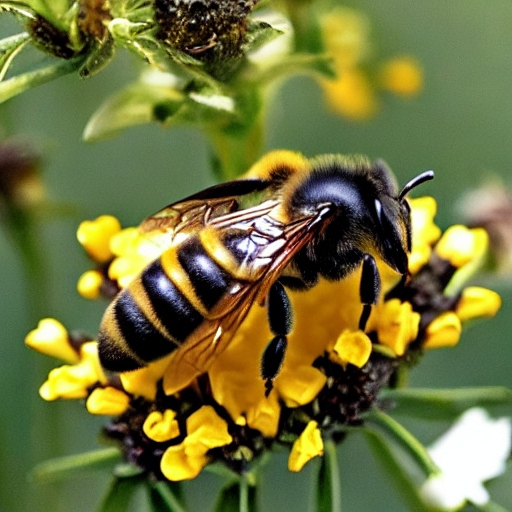
In the dance of nature, the bond between bees and flowers is vital. It’s a relationship forged over millions of years, where each needs the other to survive. Flowers aren’t just beautiful to bees; they’re essential for their survival. Flowers provide the food they need to live.
Importance of Flowers for Bees’ Survival
Flowers give bees essential food like nectar and pollen. Nectar fuels their flights between flowers. Pollen is packed with nutrients for bee health and growth.
Without flowers, bees would have trouble getting food. Flowers help bees all year round by offering different food options.
Bees depend on lots of different flowers to survive. The connections between bees and certain flowers show how nature adapts and connects.
Connection Between Bees, Flowers, and Pollination
Flowers do more than just provide food for bees. They also help with pollination. When bees collect nectar, they move pollen between flowers. This helps plants make seeds and fruits.
The relationship between bees and flowers is vital for both and for the environment. Bees spread pollen, which helps flowers reproduce. This process is crucial for maintaining biodiversity and keeping ecosystems healthy. Bees are attracted to flowers for nectar, and they help pollinate plants as they move from each flower. This happens naturally in wild areas. It is also encouraged by beekeepers and gardeners. Bees are also helpful in agricultural settings, where they pollinate crops like almonds and berries. They contribute to increased crop production and better soil quality. In gardens, flowers not only beautify the surroundings but also attract bees, butterflies, and other beneficial insects. This helps in maintaining a healthy ecosystem and supports sustainable practices.
Do Bees Sleep in Flowers?
Exploration of the myth versus reality
Many people think bees, especially bumblebees, sleep inside flower petals at night. It’s a sweet idea, imagining these little creatures curled up in a comfy flower bed.
However, the truth is a bit different. While bees do take breaks on flowers during their busy foraging days, they don’t fall asleep in them.
Bees have specific spots where they rest at night or take breaks. Debunking this myth helps us understand bees better. It also helps to appreciate these fascinating creatures even more.
Bees have important routines and habits for survival and the ecosystem. By sorting out what’s true, we can learn more about these hardworking insects.
Research findings on where bees truly sleep
Research reveals the fascinating sleeping habits of bees. Honeybees, for example, often gather inside their hives to stay warm and safe.
Bumblebees also have special sleeping areas in their nests. They gather eggs for warmth and safety in colder weather or at night. Flowers are mainly for food, not sleeping, for bumblebees.
Flowers give bees nectar and pollen for food. Bees might take breaks on flowers, but they don’t sleep there overnight.
Studying bee behavior and habitats helps us understand these amazing creatures better. Learning where bees sleep shows how they survive and how they rely on their surroundings.
Unique Behaviors Related to Sleeping Habits

When it comes to the fascinating world of the bumble bee bees sleeping and their relationship with flowers, some lesser-known facts shed light on their unique behaviors. One such intriguing aspect is the sleeping habits of bumblebees.
Unlike honey bees that return to their hives at night, some bumble bees have been observed sleeping inside flowers. This behavior serves as a way for them to rest securely hidden from the sun and potential predators while being close to a fresh source of nectar for when they awaken in the morning.
Moreover, male bees, also known as drones, exhibit interesting sleeping patterns as well. Male bees do not have stingers and the males do not contribute to hive activities like female worker bees or the new queen does.
Instead, they spend much of their time searching for mates and more flowers and resting in flowers overnight. This behavior not only provides them with a cozy spot to sleep but also allows them to be near potential female partners when morning comes.
Unusual Flower Species Favored by Certain Bee Species
In the intricate dance between bees and flowers, certain honey bee species demonstrate a preference for specific types of blooms that cater to their needs. For example, some wild honey bee species are known to favor squash blossoms as ideal resting spots due to their large size and sturdy structure.
These vibrant blossoms provide ample space for the bees to nestle in comfortably while offering easy access to abundant nectar reserves. Additionally, honeybees have shown a penchant for visiting hummingbird feeders during periods when nectar source floral resources are scarce.
The sweet liquid present in these feeders serves as a quick energy source for the industrious honey bees as they go about their daily tasks. This adaptive behavior highlights how these remarkable creatures can find alternative sources of sustenance when faced with winter colds and with limited floral options.
Overall, these lesser-known facts about the interplay between bees and flowers provide valuable insights into the intricate relationships that exist in nature’s tapestry. Understanding the unique behaviors related to bee sleeping habits and uncovering more resources for the unusual flower species favored by certain bee species adds depth to our appreciation for these essential pollinators and the vital role they play in sustaining ecosystems around the world.
Summarizing Bee Behavior and Their Flower Relationship
The Marvels of Bee Behavior
As we delved into the intricate world of bees, we uncovered fascinating insights into their behavior. From their dedicated work as pollinators to their unique sleep patterns, bees are truly remarkable creatures. We learned that bees have specific nesting habits and rely heavily on flowers for survival, showcasing a delicate dance between these industrious insects and the beautiful blooms they frequent.
The Sweet Relationship Between Bees and Flowers
The relationship between bees and flowers is nothing short of magical. Bees depend on flowers for nectar, which fuels them as they tirelessly zip from bloom to flower head to bloom collecting pollen.
In return forage, bees inadvertently aid in pollination, allowing flowers to reproduce and thrive. This mutualistic bond not only sustains both parties but also contributes to the vibrant tapestry of life in nature.
Revisiting the Intriguing Question
Now, circling back to our initial pondering: Do bees sleep in flowers? While it may seem like a whimsical notion from a storybook, the reality is that bees do not curl up inside flower petals for a snooze. Instead, these industrious insects find refuge in safe spots within their nests or hives when it’s time to rest.
The idea of bees slumbering amidst petals may be charming but understanding their actual sleeping habits sheds light on the true nature of these buzzing garden wonders. , exploring the world of bees and their relationship with flowers has unveiled a captivating tale of interconnectedness in nature.
By gaining insight into bee behavior and understanding the vital role that flowers play in sustaining bee populations, we develop a deeper appreciation for these essential pollinators and the beauty they bring to our environment. So while bees may not tuck themselves into flower beds at night, the enchanting harmony between these creatures and blossoms in late summer and early spring continues to inspire awe and wonder in all who pause to observe this wondrous alliance.
Neutralize Bees with D-Termination: Las Vegas’ Top Pest Control Provider!

Dealing with bee problems on your Las Vegas property? Trust D-Termination to help. Our skilled team excels in eliminating bee infestations, restoring comfort and peace to your environment. Bid farewell to bees—choose D-Termination for reliable pest control today!
Reach out to us at 702-919-6310 or visit dtermination.com to schedule your bee control service and reclaim your space from these bothersome insects.
Frequently Asked Questions:
Bees rest on flowers for various reasons, including conserving energy and seeking shelter.
Bees do not fall asleep in flowers due to fatigue from flying.
Bees often sleep in hives or other protected locations during the night.
No, bees do not sleep in flowers while holding each other’s feet. They typically rest individually.







